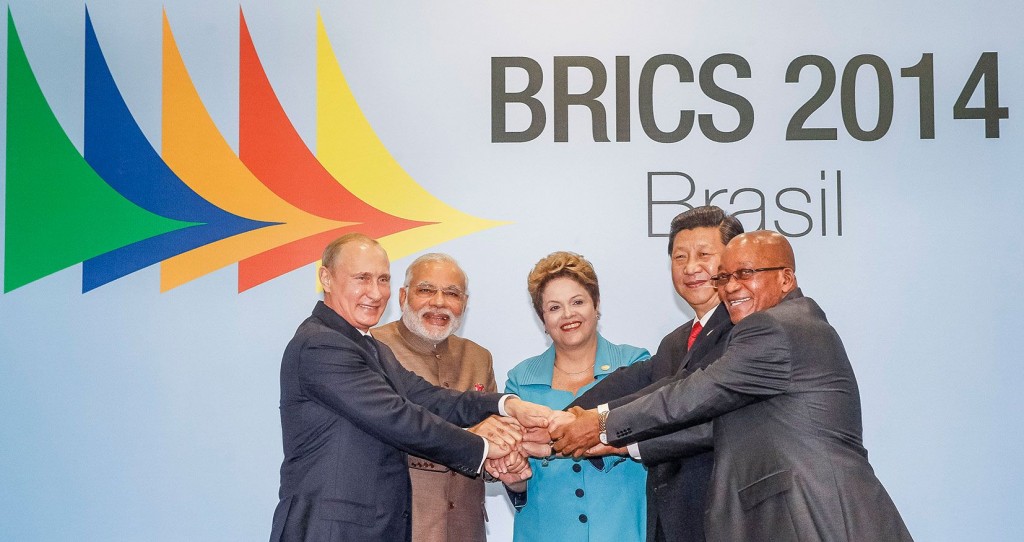
Recently, western media outlets have accused China of attempting to replace the current international finance system, led by the World Bank (WB) and International Monetary Fund (IMF), with a “Plan B”.
While true that in addition to setting up the Silk Road Fund, China also proposed the Asian Infrastructure Investment Bank (AIIB) and is involved in the New Development Bank (NDB) with other BRICS members. These steps, however, do not mean China istrying to forge its own system. Nor could it do so.
The current international finance system not only relies on institutions like the IMF and WB but also on the U.S. dollar, which functions as the main global currency.
In place for more than five decades, the current system has been tested, most recently by the global financial crisis starting in 2008.
Even given its flaws, the idea that China want to scrap it completely is irrational.
China has been active in propping up the international financial system. The initiatives championed by China are meant to complement a system plagued with administrative impotency.
As the world’s top two economies, the U.S. and China are obliged to carry out bilateralfinancial cooperation to enhance the financial administration.
Since 2009, the China-U.S. Strategic and Economic Dialogue has achieved a lot. This year,the both sides agreed to continue “over-the-counter” derivative reforms. They alsocommitted to strengthening cooperation in the IMF, and continuing to improve the IMF’squota and governance structure.
Such cooperation will help stabilize the global economy and contain international financialrisks.
The current global financial crisis, which stems from the sub-prime mortgage crisis in the U.S. in 2007, is still lingering, with sovereign debt and sovereign default leading to the febrile economic environment in Europe.
Against this backdrop, some developed nations are mulling monetary easing measures.Yet, their traditional industry demand is weak and a large amount of the money pumpedin will have no outlet, which exacerbates the situation.
In Asia, meanwhile, there is huge demand for infrastructure financing.
Statistics from the Asian Development Bank (ADB) say that between 2010 and 2020,investment of around 8 trillion U.S. dollars will be needed in the Asia-Pacific region toimprove infrastructure. However, the ADB is only able to provide about 10 billion dollars annually.
The AIIB, with an expected initial subscribed capital of 50 billion U.S. dollars, therefore complements existing multilateral financial institutions. By bridging the gap between supply and demand in the international monetary market, it can channel funds to where demand is high.
There is no reason, therefore, why the AIIB would not coexist peacefully with itsmultinational contemporaries that also operate in Asia, as their efforts are focused onpoverty reduction.
The presidents of both the WB and ADB have said their institutions are ready to cooperatewith the AIIB. The number of AIIB founding members stands at 57, including Britain and Germany, all of whom agreed on the AIIB Charter.
China’s financial solutions for the world are not “subversive”; they are inclusive andcomplementary.
At their best, China’s actions show that it is leading efforts to increase the involvement of emerging economies in international finance.
Emerging economies account for 30 percent of the world economic output, up from 7 percent in 2000.
According to the IMF, China will contribute 28.5 percent to global economic growth in 2015, up from 27.8 percent last year, signifying it is still an important global growth engine.
If contributions from emerging economies are not reflected in the global financial system,then it means the system is still controlled by a handful of developed nations, stalling workable solutions to many major financial problems.
Different from the multilateral institutions that often attach political conditions while providing funding services, China’s initiatives are open and inclusive. They offer alternatives to economies that are struggling for finance.
China’s latest projects are helping hand to the existing financial system while inviting developed and emerging economies to work together on future of global finance.